To assess general attitudes about growth in Idaho, we asked respondents whether they believe growth in the state is occurring too fast, too slow, or about right. This is a question that we have asked Treasure Valley residents over the years, but this marks the first time we asked the question statewide.
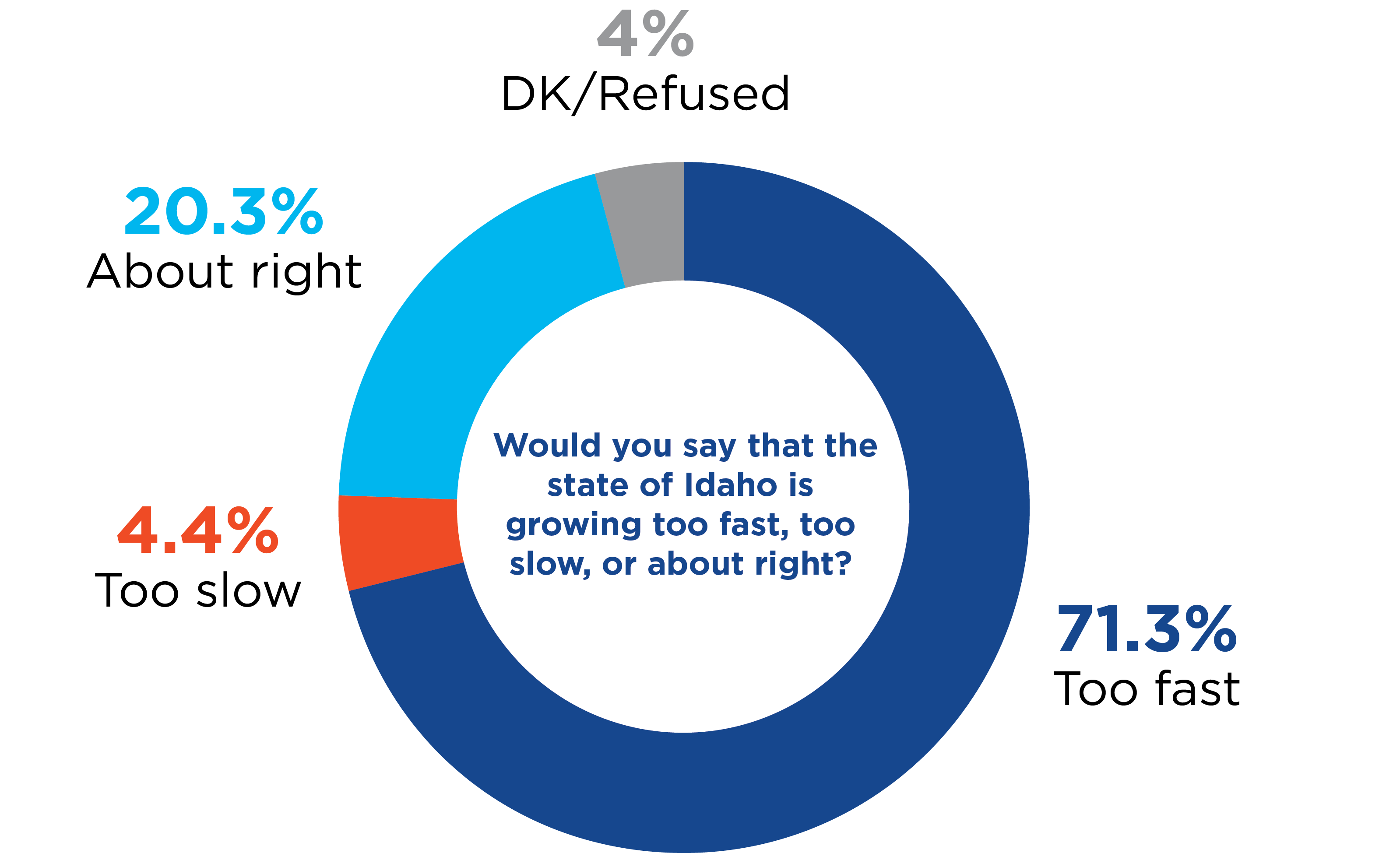
A large majority of Idaho residents (71%) feel the pace of growth is occurring too fast. Only 20% believe the pace of growth is about right and 4% too slow. Republicans (79%), Democrats (65%) and Independents (66%) all believe that Idaho is growing too fast. Additionally, long-term Idaho residents – those who have lived in the state for 10 years or more – are far more likely to say the state is growing too fast (75%) than those who moved to the state more recently (58%).
When it comes to controlling growth, 28% feel the state should consider slowing its recruitment of new businesses to the state, but the majority disagree with that approach (60%). Republicans are more likely to say the state should slow its recruitment (35%) than Democrats (26%) or Independents (24%).
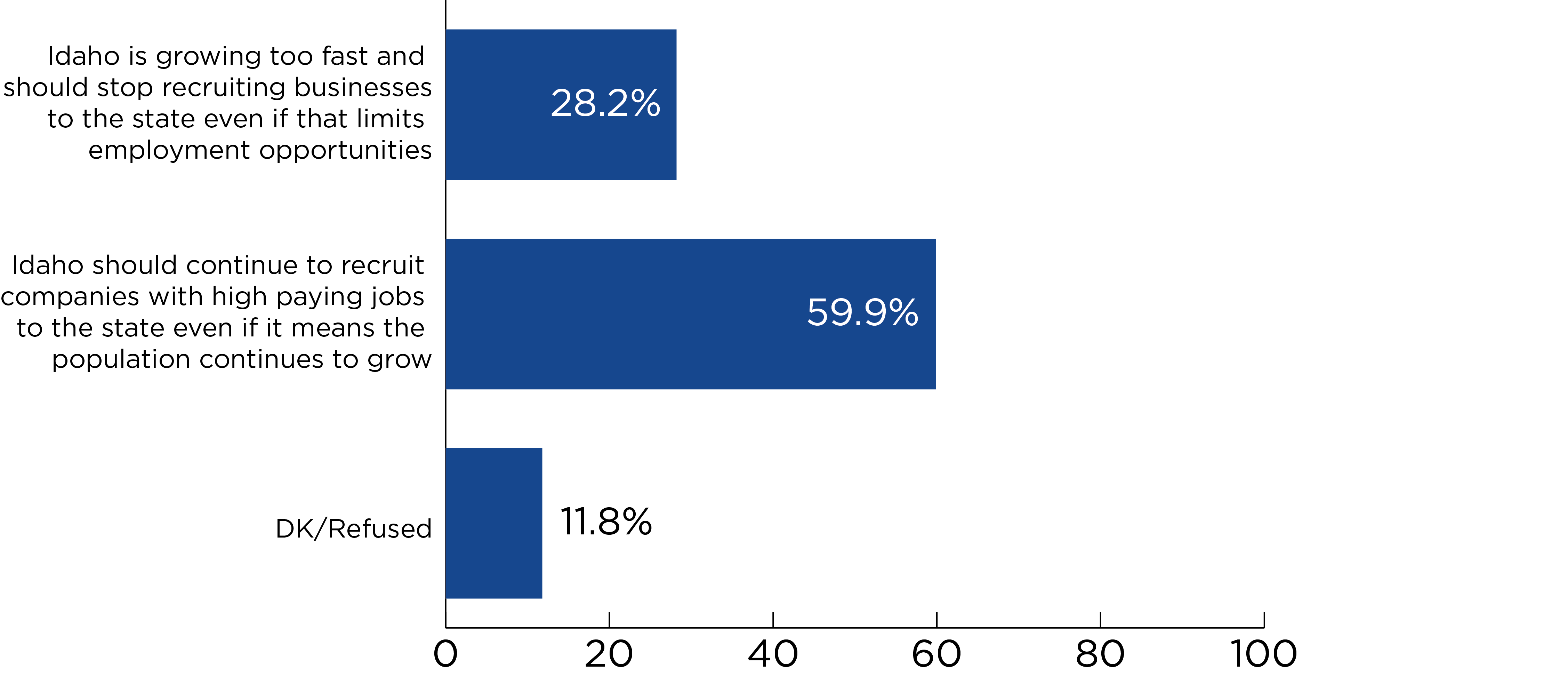
New Arrivals
With the pace of Idaho’s growth, some wonder about the type of people moving to the state. By comparing those who have arrived in Idaho during the last 10 years (20% of the sample) to those who have lived in Idaho 10 years or longer (80% of the sample), we can identify whether these groups differ from one another.
We find few significant differences demographically between the recent arrivals and those who have lived here for a longer period of time. Approximately half of both groups are currently employed, while roughly one-quarter of each group are retired. While it is still possible that there are larger shares of retirees moving to certain parts of Idaho, or from certain states, these results suggest that when we look at the state as a whole, the recent arrivals have very similar employment profiles to those who have lived here for a longer period of time.
When it comes to ideology, people moving to the state identify as slightly more conservative (53%) than those having lived here longer (49%). That said, when it comes to party identification there is no significant difference. Independents are the largest group among both recent arrivals (42%) and long-term residents (39%), followed closely by Republicans (36% of recent arrivals, 38% of long-term residents). Democrats comprise a smaller share of both recent arrivals (16%) and long-term residents (13%).
Housing
Population growth increases housing demand. The state’s housing inventory has not kept up with growth, meaning that housing prices – both renter-occupied and owner-occupied – have increased. To test Idahoans’ perceptions on this trend, we asked “If you had to move out of your home today for whatever reason, how likely is it that you would be able to purchase or rent a similar home for the same amount?” An overwhelming 72% of respondents said it is unlikely they would be able to find a similar home for the same amount, with 60% going so far as to say it is very unlikely. Only a quarter of Idahoans (26%) said it was likely they could find a similar home for the same price.
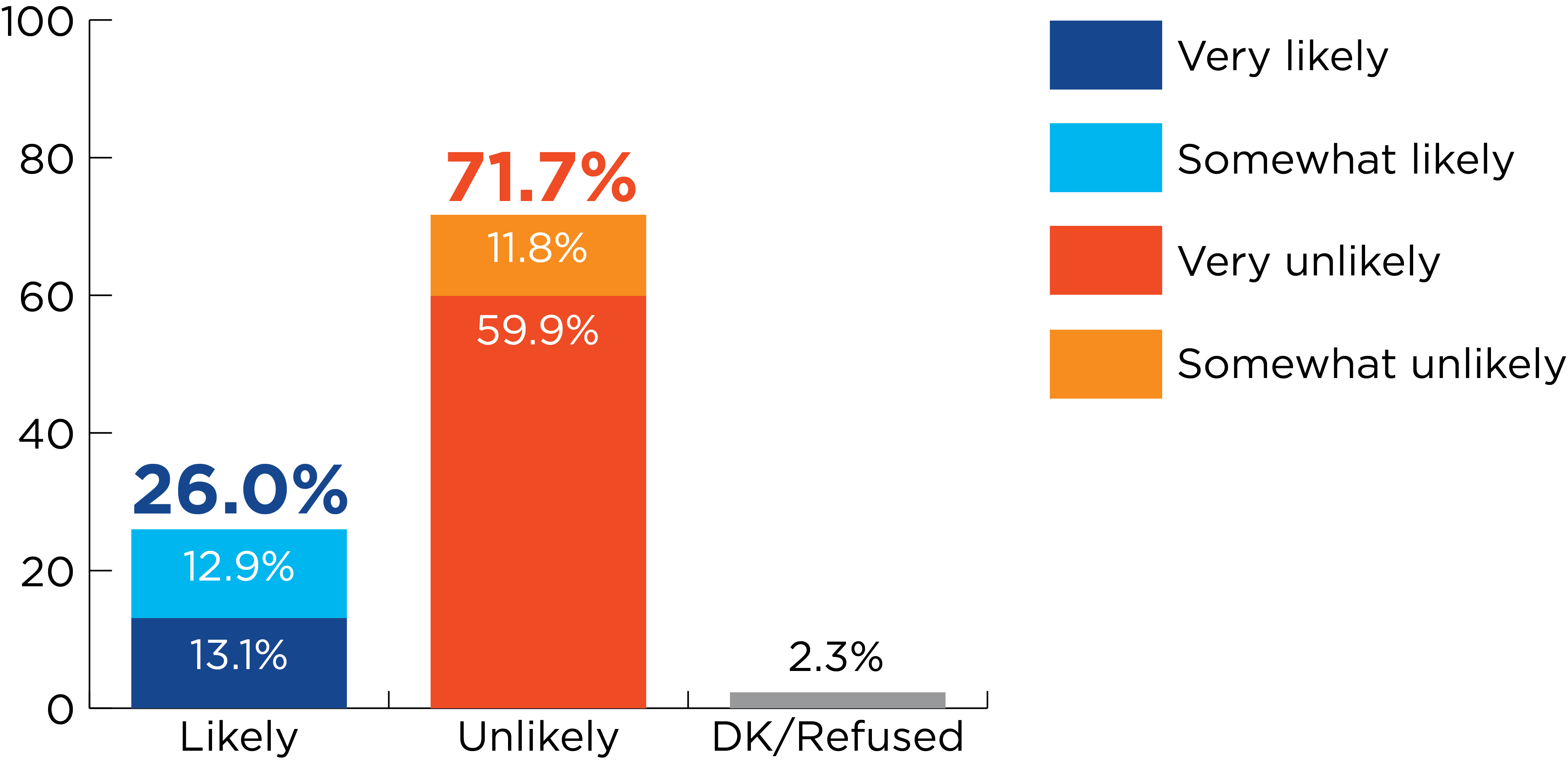
Transportation
Growth also impacts transportation infrastructure across the state. A 2020 report found that in order to maintain existing infrastructure Idaho would need to invest an additional $242 million per year. We were interested in gauging not only if Idahoans thought the State was spending enough on maintaining roads and bridges, but also whether knowledge of what the State had already committed towards that end would affect their responses.
To test this, we asked half of our sample which of the following came closest to their opinion: Idaho is spending enough when it comes to building and maintaining roads and bridges OR Idaho needs to spend more on building and maintaining roads and bridges. The other half of our sample were asked a version of the question that included the following brief overview of recent state spending: “Recently, Idaho authorized $122 million in one-time funding and $80 million in permanent funding for roads and bridge projects.”
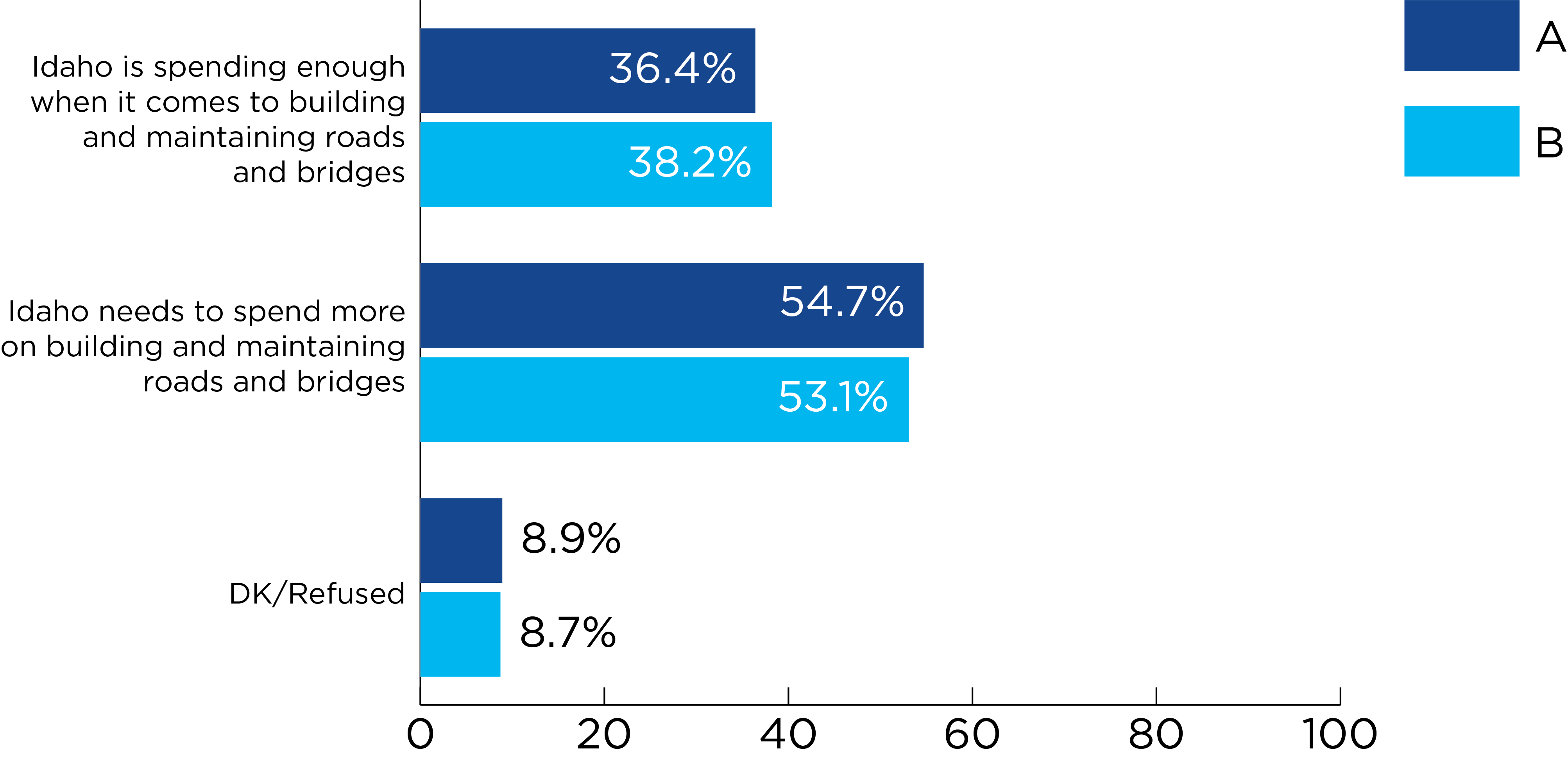
Results were similar regardless of which version of the question was asked. A majority of those who were simply asked for their opinion (55%) indicated that the state needed to spend more on roads and bridges, while a similar majority (53%) of those who received the overview of recent spending also felt the state needed to spend more.
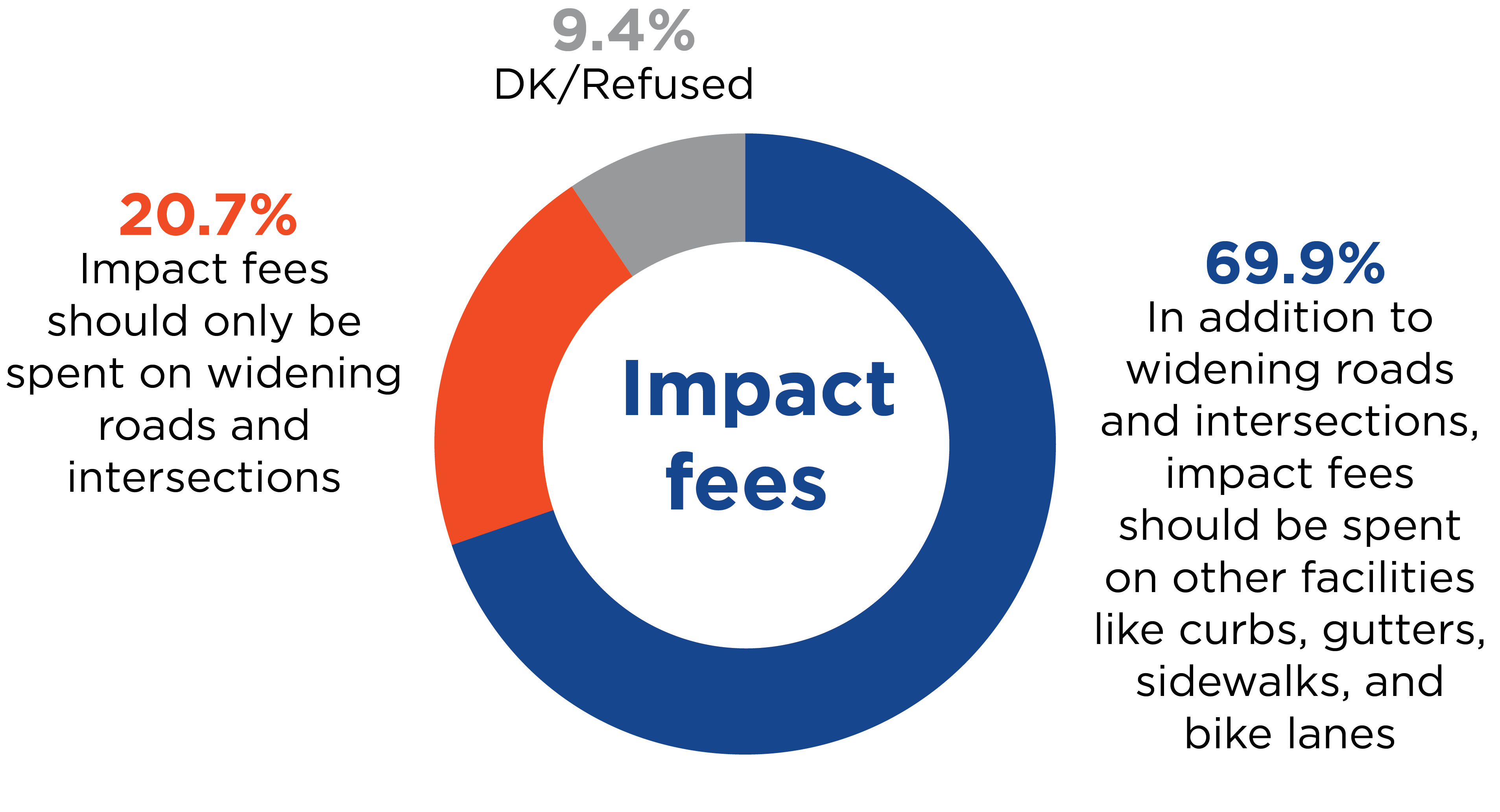
One way that growth is often asked to help pay for itself is through the use of impact fees. Impact fees are charged to developers to help pay for the cost of new improvements needed to accommodate growth. Currently in Idaho, impact fees can only be spent on widening roads and intersections, though some wish to expand their use to include other infrastructure improvements such as curbs, gutters, sidewalks, and bike lanes. We asked Idahoans whether they felt impact fees should only be spent on widening roads and bridges OR if, in addition to that, their use should include these other uses. A sizable majority (70%) indicated that in addition to widening roads and intersections, they believe that impact fees should be spent on these other facilities, while 21% believe it should stay as it currently is. Support for expanding the use of impact fees was strongest among Democrats (86%), but also exceeded 60% support among both Independents (73%) and Republicans (63%).